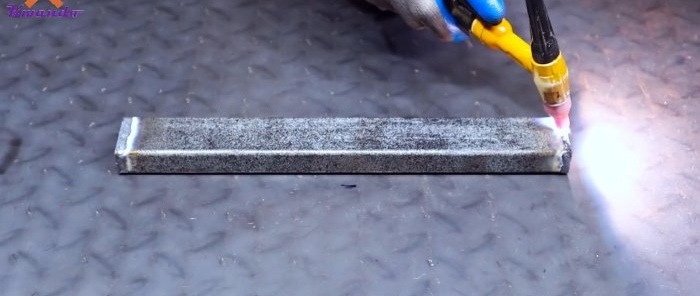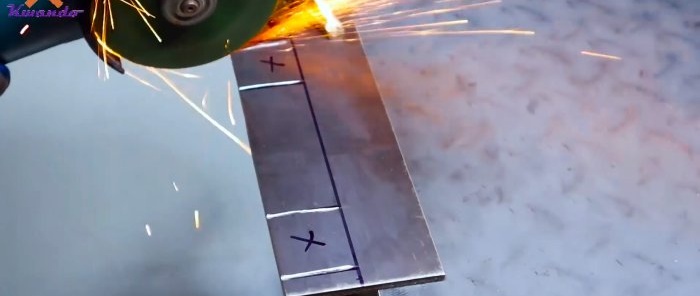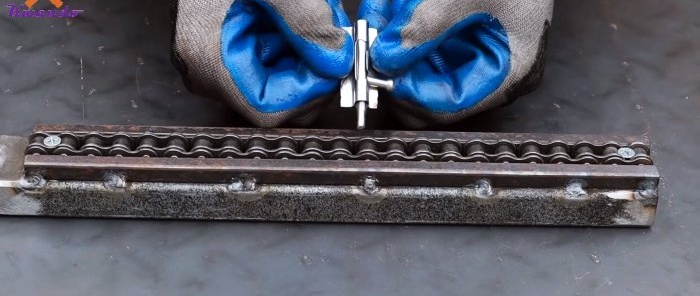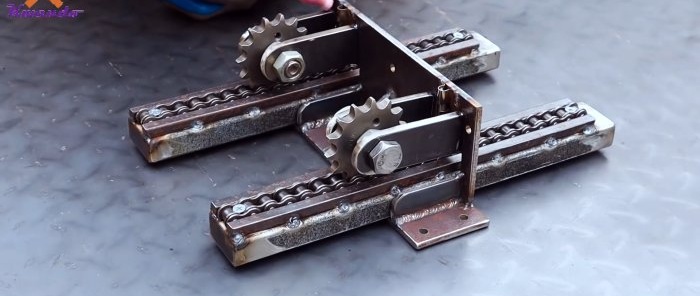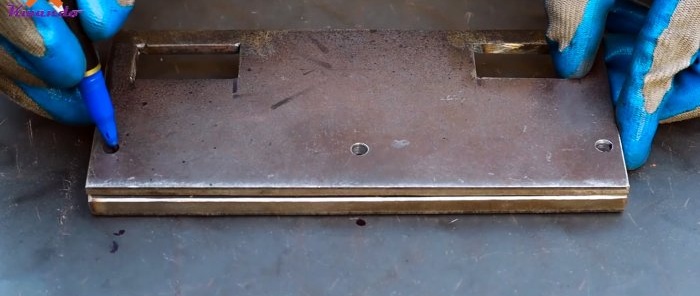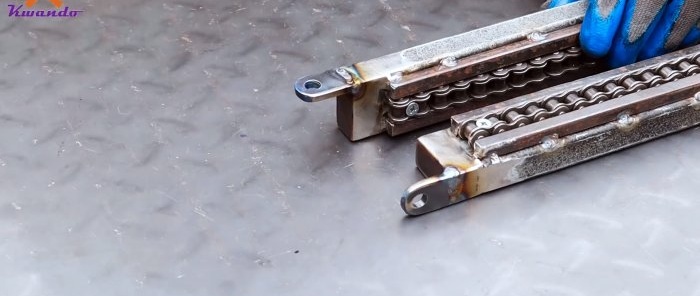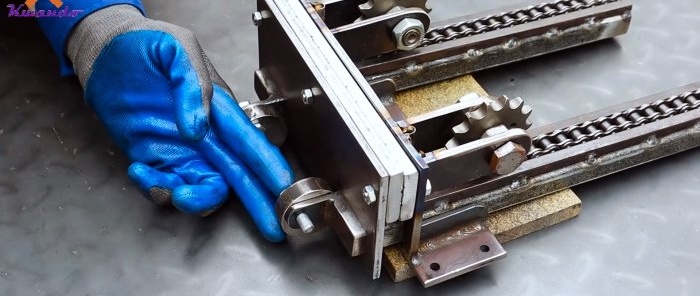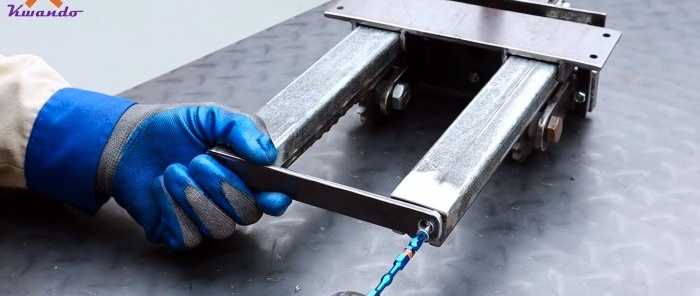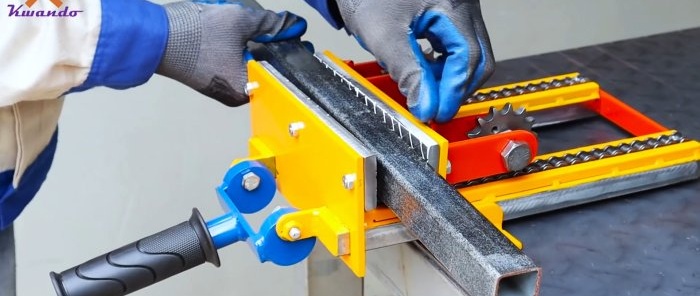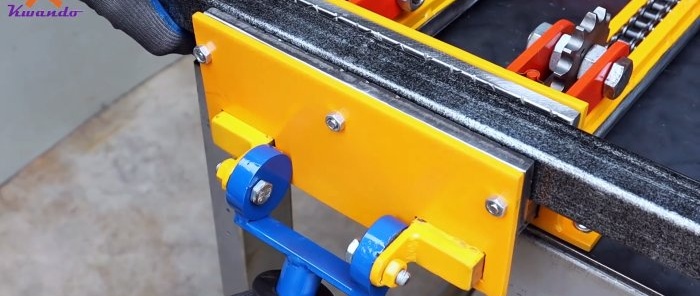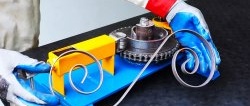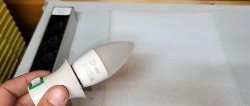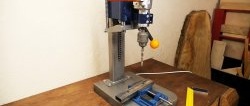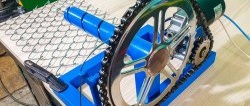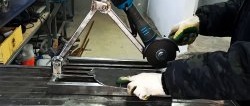If your home workshop does not have a bench vice, then performing some operations with metal will be difficult or even impossible. Buying this bulky mechanism in a store will require a lot of money. Old bicycle spare parts will help you get out of this situation, from which you can assemble unique vices no worse than factory ones.
Will need
Materials:
- bicycle chain;
- 2 bicycle sprockets;
- profile rectangular and round pipe;
- square bar;
- rectangular plates and strips;
- 2 overhead window latches;
- bolts, screws and nuts;
- round timber;
- spray paint;
- bicycle handlebar grip.
Tools: kerosene (white spirit), toothbrush, jigsaw, welding machine, grinder, drill, drilling machine, etc.
The process of making unique vices from old bicycle parts
Place an old bicycle chain and 2 sprockets in a container. Pour kerosene or white spirit and use a toothbrush to remove dirt from the spare parts.
We cut 2 sections of 29 cm each from the chain.
Then we weld the ends of two sections of a profile rectangular pipe slightly longer than 29 cm with plates. We clean the weld seams with a grinder.
We lay lengthwise sections of chain on the profile pipes from one end, and on their sides - square rods also 29 cm long. We weld them to the profile pipe. We fasten the outer links of the chains to the base with screws.
We take a plate of a given thickness and dimensions in terms of 20x8 cm. We mark it according to the diameter of the profile pipe with a chain and rods, and make 2 slots closer to the edges.
We also mark and drill 2 holes in the plate along the edges and 1 in the center. In the second plate, slightly longer than the first, we drill 4 holes in the corners. We install the plate with the slots downwards vertically along the long side of the second plate and weld it.
We insert profile pipes with a chain and rods into the slots of the plate, and weld limiters on the sides of the profile pipes to the horizontal plate. To make the plate rigid, we connect it in the center with a gusset.
We vertically weld one window valve to the plate with slots in the center to lock the profile pipes when lowering the valve engine into the holes of the chain links.
We cut 4 identical fragments from the steel strip and drill into them at a distance of 2 cm from one edge along the hole. The ends of the fragments with holes are rounded. We fix the sprockets in them with bolts and nuts so that they can rotate freely on the bolts.
We insert the profile pipes into the slots in the plate, fix the position of the pipes, stopping the chain with the window shutter sliders. We rest the flat ends of the plate fragments against the plate with slots so that the sprockets engage with the chains. In this position, we weld the plate fragments to the plate with slots.
We place the assembled assembly with a plate with slots on a plate of the same size and transfer the centers of the holes and the contours of the slots to it, and perform them on a drilling machine and a grinder, respectively.
Using a plate with holes as a template, we make the same holes on two equal strips, unfolding them on one side. We make a double cross notch on the same sides.
We fasten the plates with the notches outward to the plate with the slots using three screws and nuts. We also attach the second jaw to the plate with slots in the previously assembled assembly.
We weld the flat side of 2 identical ears with holes to the profile pipes with chains at the level of the inner sides in the longitudinal direction.
We cut 2 “nickels” from the steel round timber. We drill holes in them offset from the center. We assemble the assembly, including the plate, which will serve as a stationary jaw in the vice.
We attach the “nickels” to the lugs with bolts and nuts. We weld a transverse bar to the “nickels” from below, rigidly tying them together. We weld a vertical piece of round pipe to the center of the bar and get an eccentric clamp.Also, to increase the rigidity of the structure, we connect the ends of the profile pipes with screws using a strip. We paint vices in various colors according to safety, ergonomics and design rules.
We put a bicycle handlebar grip on the handle of the eccentric clamp. We attach the vice to the workbench table and use it without restrictions, since the maximum divergence of the jaws is 20 cm.



